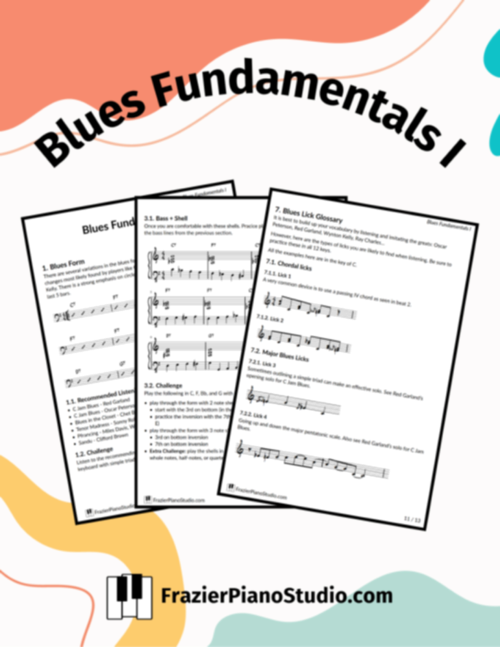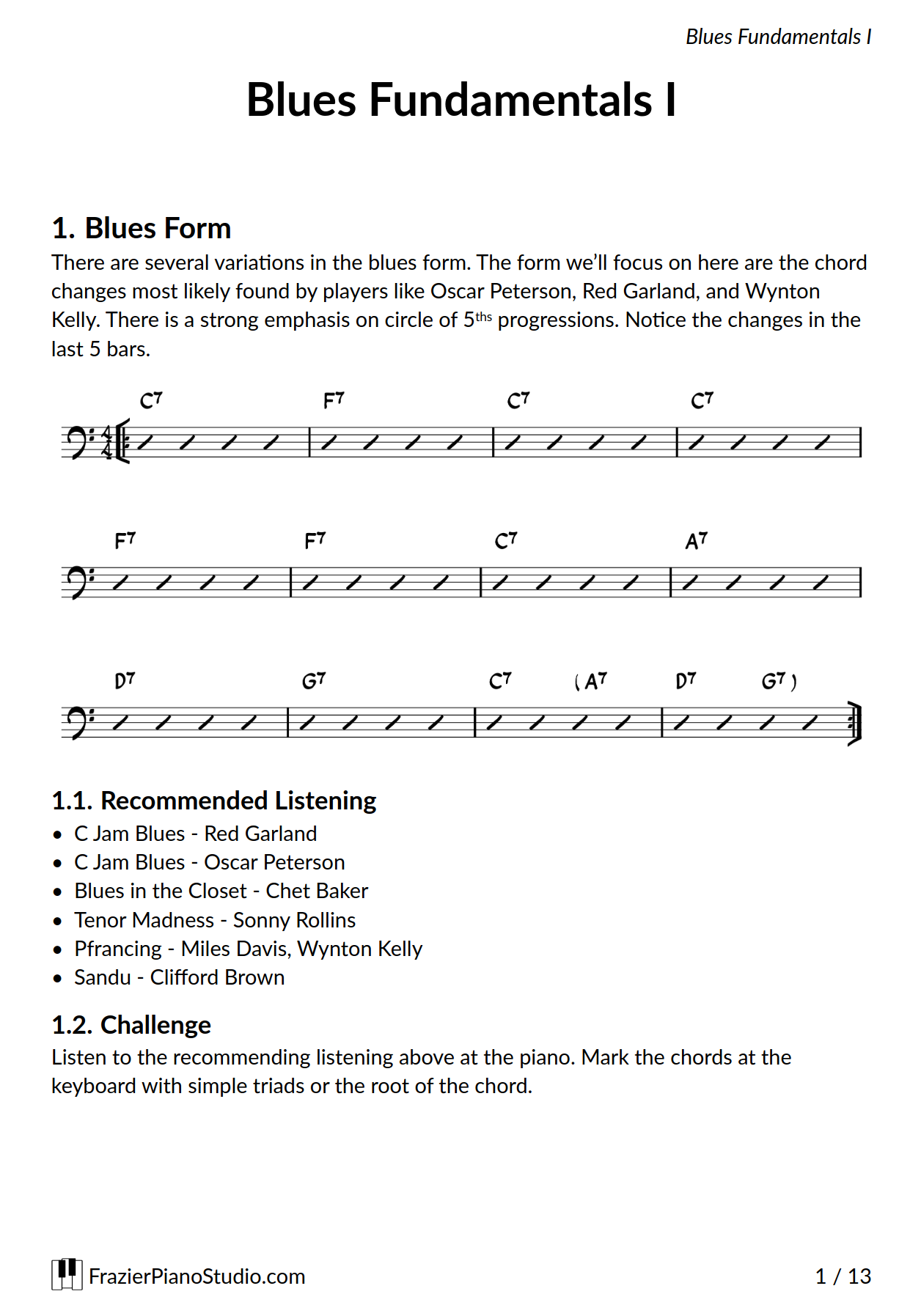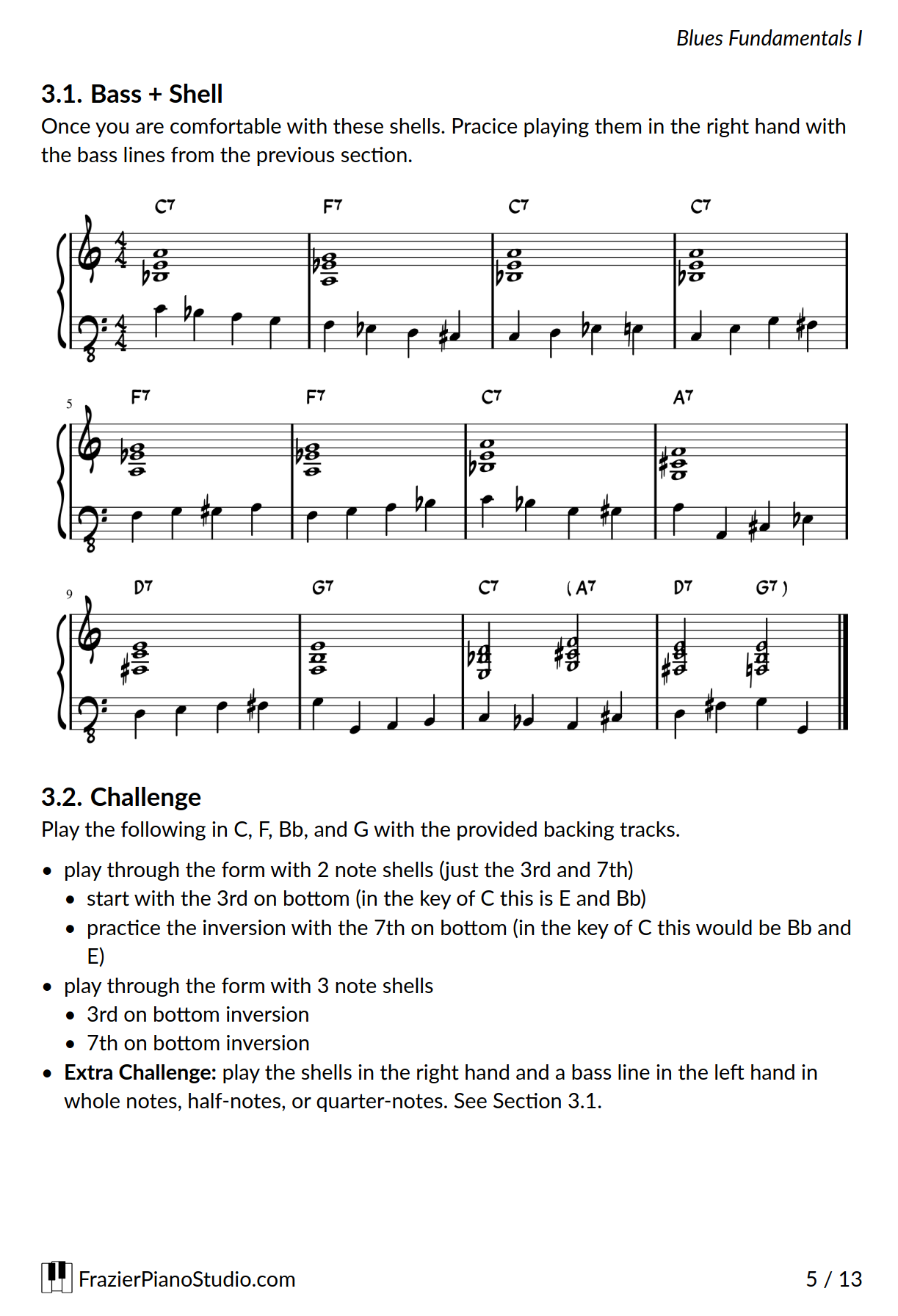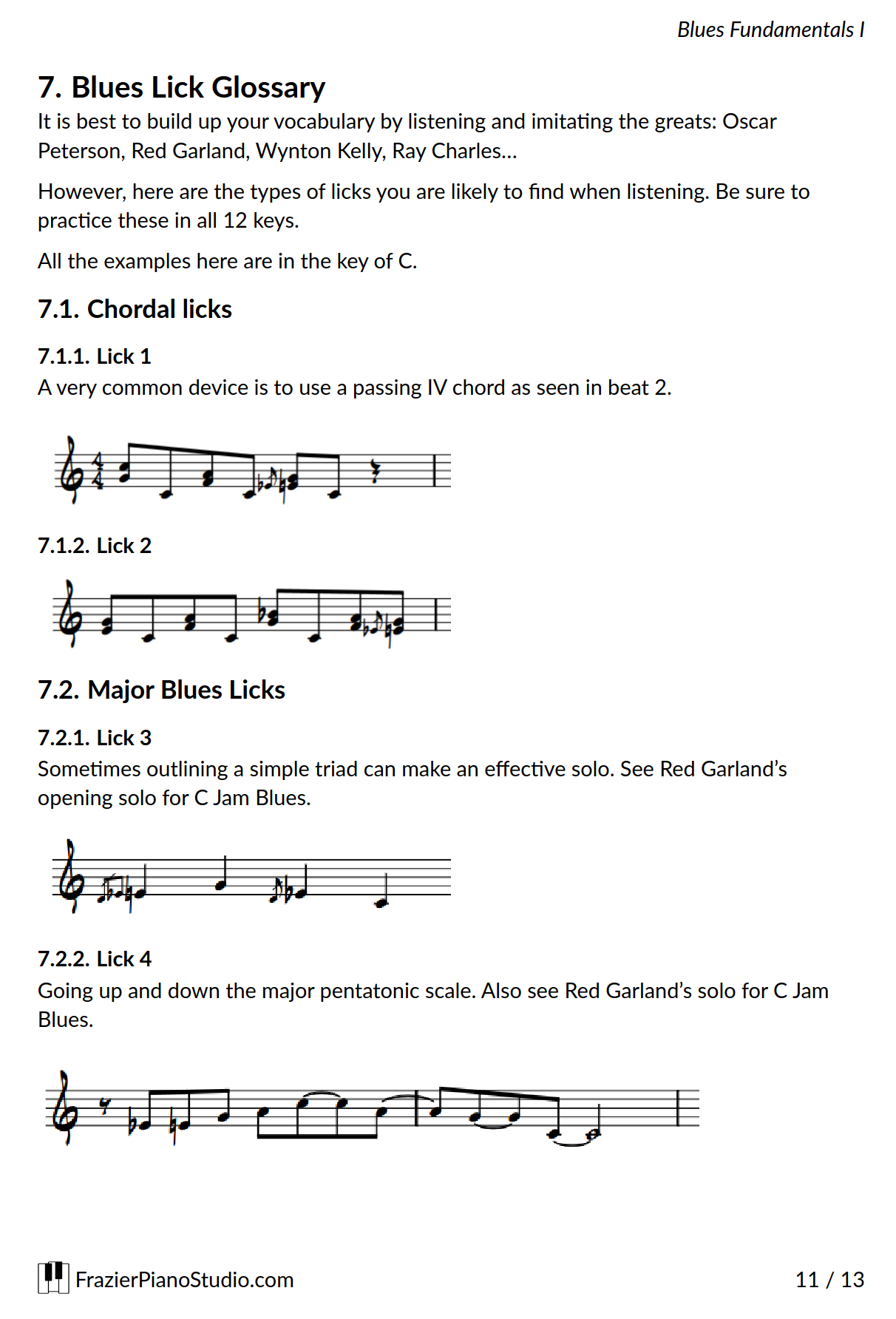Blues Fundamentals I
Course Lessons
Start CourseA step-by-step approach to learning jazz piano—starting with the blues.
After years of frustration trying to learn jazz piano the “traditional” way, I discovered what so many greats already knew: start with the blues.

This course walks you through the essential elements of blues-based jazz playing at the piano. Whether you’re coming from a classical background or just getting into jazz, this course gives you the tools to sound authentic, groove with others, and start building a real jazz vocabulary.
What You’ll Learn #
✅ Shell voicings (2- and 3-note left hand structures)
✅ How to construct walking bass lines
✅ How to use the blues scale musically (not just run it)
✅ Block chord techniques in the style of Red Garland and Oscar Peterson
✅ How to build bebop lines by targeting chord tones
✅ Real-world examples, listening suggestions, and licks to practice in 12 keys
What You Get #
🎹 13-page printable PDF workbook
🎧 Backing tracks in C, F, G, and Bb
🎼 Over 10 blues licks with notated examples
🎵 Listening recommendations for each concept
🎯 Clear practice goals and challenges for each section
Why Start with the Blues? #
Blues is the gateway to jazz. It simplifies harmony, emphasizes groove and feel, and helps you internalize the sounds and shapes of improvisation—without overwhelming you with complex chord changes.
This course builds a rock-solid foundation by focusing on:
- Blues scales and how to use them musically
- Shell voicings that free up your right hand
- Walking bass lines that outline harmony and groove
- Block chord techniques in the style of Red Garland and Oscar Peterson
- Bebop-style lines that target chord tones
These are the core tools every jazz pianist needs—and they’ll serve you well when you move on to more advanced forms and reharmonizations.




